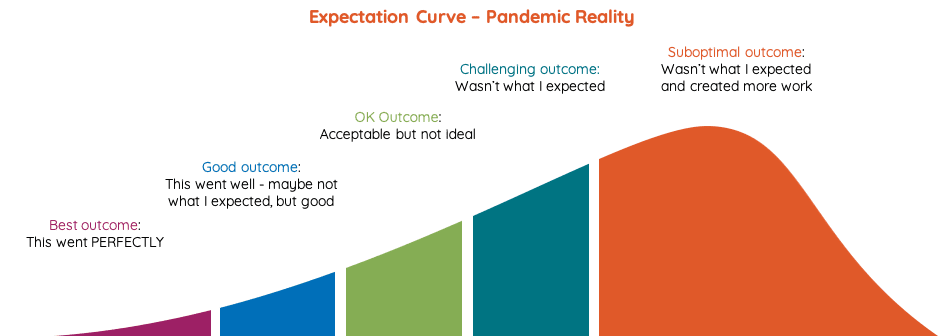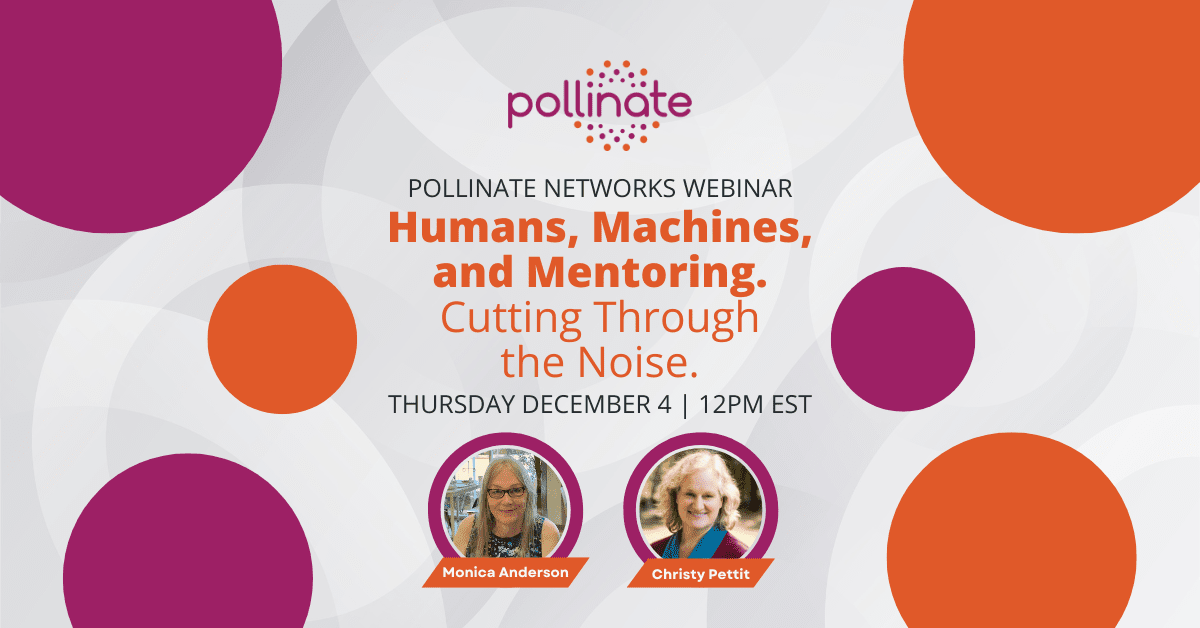
Christy Pettit
In these challenging pandemic times, we need a new vision, a new way to create our success, and the motivation to overcome the many challenges on the path forward.
“Yes, and” is a fundamental improv exercise that teaches us how to assimilate new information and contribute to the scene.
First and foremost, I believe this is a moment when we must pause and learn to use the improv technique “Yes, and.”
The improv roots of “Yes, and” make it feel like something that means you react without thinking. Au contraire. The “Yes, and” symbolizes turning off autopilot to respond effectively in this context, not to what usually happens. Not to what we’d have liked to happen, but to what is happening. “Yes, and” in our current context slows us down to take in the reality we find ourselves in before we respond.
Finding a new groove
“Yes, and” is a hard moment because it feels uncomfortable. It feels uncomfortable because we have to break personal patterns – or patterns of interacting that we’ve had in the past – that are a little more automatic and based on how things have been. If we want to thrive in the sea of change that comprises our current context, our next move is not just to forge ahead as we have always done, but to find a new groove.
When I take the time to look at my own reality and how I am experiencing these “Yes, and” moments, here is what I see: For me, and I think for most of us, the normal bell curve between what I expect and what actually happens is out of whack. Let’s assume, like an adoption curve, my usual tolerance for things being “what I expected” looks like the diagram below: I get some of what I am expecting a fair bit of the time, or it is close enough, and there’s another bit that is not what I expected:

This is survivable and about what I expect in life. As we continue to drift forward in pandemic times, the quotient of things going “as I expected” is a little different. It look more like this:

A lot fewer things are going the way I expected in today’s environment. A great deal of our capacity is being spent on the changes the pandemic has wrought upon all of our lives. And not only are outcomes less optimal than I expect them to be, I have less capacity to deal with it.
Getting into the zone
With our capacity getting squeezed by our expectations, what’s a new world citizen to do? I believe we need to pay more attention to how we respond across the situations we encounter and focus less on what we thought would happen or what we wanted to happen.
Given that we may not yet be masters of enlightenment who can give up expectations entirely and simply accept what is, we can’t avoid ourselves in this. We can’t avoid our reactions – positive and negative – or the stories we tell ourselves, the feelings of indignation and exhaustion that stem from things being so different and difficult right now. I am not an expert in healthy coping strategies (although I am constantly trying to develop them), but we do have partners who focus on stress management and mental health at Pollinate.
However, I do know how to keep teams functioning, and one thing that must happen for teams to function optimally is to ensure people on the team are taking personal accountability – with support – for their own capacity, i.e., how well they are coping with delivering their workload and participating effectively on the current landscape.
For our team, we’ve relied on some excellent mentors in our network to help us with this. Our operations group has also elected to do a Design Lab with one of our mentors to shift and reshape their delivery approach given that we have to work differently now. This process, inspired by design thinking, is another way to say “Yes, and.”
Am I just saying, “make a habit of pausing before you act?” No, not really, although that can be sage advice. What I am saying is this: Pause once for all time and commit to managing the expectation curve differently.
Changing your normal patterns of response
To address the pandemic change to our environment, you have to change from your normal patterns of response. The first and most helpful thing that you can change is how you evaluate your expectation curve. Notice your reactions to things evolving, and instead of telling stories about how it didn’t meet your expectations, observe your response. When you think about what you really want and what you are trying to do, is your response effective or ineffective?
“Well,” you may say, “that’s all well and good, but what if I don’t know if my response was effective? What if I need to expand my repertoire of responses so I have a few to handle the more difficult zones of my response curve?”
My advice? Get a mentor. Or a co-mentoring group or leadership cohort. The mentor and co-mentor role is one where the entire point is to apply wisdom to increase the effectiveness of the response within the actual context you are working in. The mind cannot de-bias itself, and what better way to gain insight on how to increase your effectiveness than through collective insights with someone or a few people whose entire role and purpose is to help you do just that, and who have insight into your context?

Leaders: If you want to increase effective responses to what is happening right now, and you want people to respond in the most effective ways, prepare your people to be mentors and mentees. These skills are critical to survive in the new world. Ensure your organization is getting the benefits mentoring can bring; it is a unique way to support people through a blend of “knowledge transfer + social support.”
As we pass through our “Yes, and” moment, we are on our way forward. When we confront reality effectively, we are into the new. Stay tuned for our next update on where our “Yes, and” is taking us. And in the meantime – please connect with us for support with the art and science of mentoring. Our virtual mentorship programs just turned 12 and we love to share them.
— Christy



